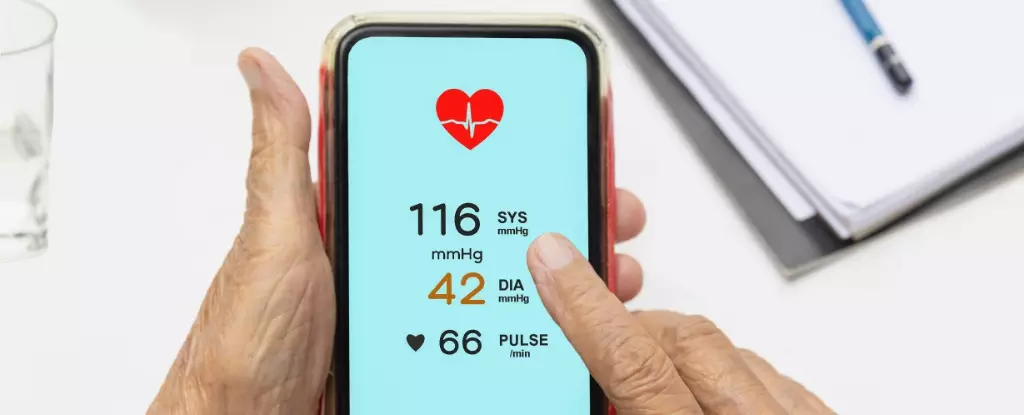High blood pressure, known medically as hypertension, remains a silent menace that affects millions globally. Its implications stretch far beyond elevated readings; hypertension can pave the way for grave health conditions, including heart disease and kidney failure. Traditional avenues for diagnosing this condition require specialized equipment and professional consultations, which can be a barrier for many, especially in underserved communities. However, a groundbreaking development from researchers at the University of Pittsburgh promises to revolutionize how we monitor this critical aspect of our health: a smartphone application that remotely estimates blood pressure.
The statistics surrounding hypertension highlight a pressing public health challenge. Many individuals do not recognize that they are affected, primarily due to the lack of regular check-ups and the unavailability of monitoring devices. For populations with limited access to healthcare, such as those in rural areas or low-income communities, this can lead to undiagnosed conditions that worsen over time. As Dr. Ramakrishna Mukkamala, a lead researcher on the project, notes, “In underserved populations, many people don’t have access to blood pressure cuffs, regular doctor’s appointments, or even know it’s a problem – but they do have smartphones.” The application developed by the team aims to bridge this gap by leveraging existing mobile technology to provide a convenient and non-invasive way to track blood pressure.
How the App Works
Unlike traditional methods, which typically involve a sphygmomanometer cuff that physically impedes blood flow to measure pressure, this new smartphone application utilizes the phone’s built-in sensors. By integrating data from the accelerometer, camera, and touch sensors, the app can assess cardiovascular health using existing technology in a device that is portable and user-friendly.
The innovative process revolves around gathering readings from the user’s finger pressure on the touch screen while manipulating the hand position. This technique takes advantage of gravitational force to estimate pulse pressure. As Vishaal Dhamotharan, a biomedical engineer involved in the research, explains, changing the position of one’s hands relative to the heart generates a hydrostatic pressure change, which the app can quantify. This method allows individuals to engage in a simple exercise that determines their readings without the need for precise medical equipment.
Accuracy and Reliability of the Application
Initial tests of the application demonstrated promising results. In a study involving 24 participants, the system’s readings were found to be reasonably accurate, with an acceptable margin of error within 8 mm Hg when compared to established standards. As the researchers continue to refine their methodology, they anticipate that the accuracy levels will improve even further, heralding a new era in remote health monitoring.
Despite the encouraging findings, the development team acknowledges the challenge of changing public perception surrounding blood pressure measurement. Emphasizing the potential of pulse pressure as a reliable indicator is crucial for increasing acceptance of the application. Sanjeev Shroff, another research team member, noted, “Development of a cuffless blood pressure measurement device that does not require any external calibration is the holy grail – such a device currently does not exist.” This statement underscores the significance of their work and the potential widespread impact it could have on hypertension management.
The implications of this development are vast. As smartphones become increasingly ubiquitous, the ability to use them as a health-monitoring tool could empower individuals, especially in remote or underserved areas where traditional medical resources are scarce. Moreover, widespread availability of blood pressure monitoring through a smartphone could help raise awareness about hypertension and encourage individuals to take proactive measures in managing their health.
The innovation from the University of Pittsburgh represents not just a technological advancement but also a vital step towards democratizing healthcare access. By harnessing the power of commonly held devices, this application has the potential to transform how individuals engage with their health, ultimately leading to earlier diagnoses and improved outcomes for those at risk of hypertension. With further development, it may be possible to see all individuals equipped with the capability to monitor their blood pressure, transforming the landscape of preventive health care.


Leave a Reply